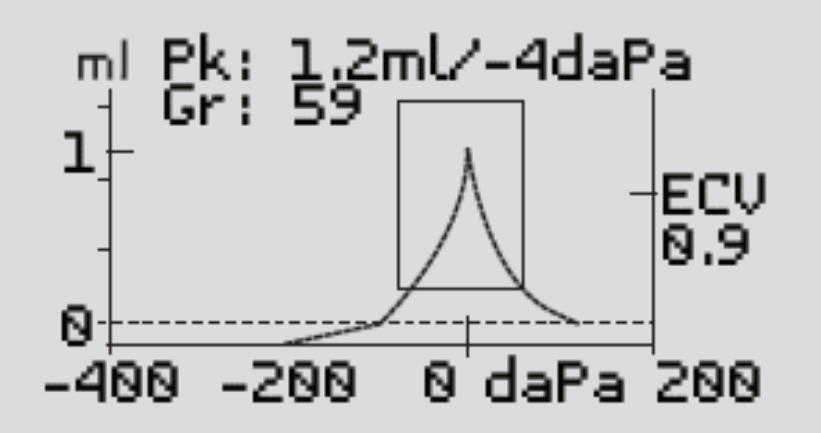Tympanometry and other middle ear tests are an essential part of audiometry testing worldwide. An in-depth look at a patient’s tympanic membrane and middle ear can uncover results that give valuable insight into the hearing health of your patients.
Some of the first middle ear tests were conducted as early as 1867, however it wasn’t until the mid to late 1900s that they were performed regularly in a clinical setting. Now, tympanometry is a standard test for anyone looking to assess the health of a patient’s middle ear.
While middle ear measurements are relatively easy to conduct, a lot happens to retrieve that data. Get an overview of tympanometry, acoustic reflex testing, and the devices hearing care professionals rely on to conduct these tests, below.
What is Tympanometry?
Tympanometry is a test conducted by hearing care professionals and primary care physicians to test the health and functionality of the ear drum and middle ear. The devices used to conduct these tests are called tympanometers.
Where audiograms reflect subjective interpretations of sound, a tympanometry test is objective. It measures several different characteristics of a patient’s ear including:
- Mobility or stiffness of the tympanic membrane and middle ear system, known as “compliance” or “admittance”
- Ear canal volume from probe tip to tympanic membrane
- Middle ear pressure
An otoscopy exam is typically performed to visually assess the condition of the ear before middle ear measurements are recorded. On average, a tympanometry test takes less than 5 minutes for both ears and requires no patient action or response.
A tympanometry test measures the admittance of the ear drum and middle ear by playing a continuous tone into the ear canal at 226 Hz (1000 Hz for pediatric patients) and presenting various air pressures.
In MedRx tympanometers, this tone is calibrated to present at 85 dB SPL in a 2 ml cavity. The SPL produced in the patient’s ear canal is measured using a microphone in the probe. Because compliance of the middle ear is directly proportional to the SPL changes, it is calculated as an equivalent volume of air in ml (for 226Hz).
The visual representation of these results is called a tympanogram.
How To Read A Tympanogram
During the tympanometry test, the probe determines the changes in volume of the ear canal from the probe tip to the eardrum. It then finds the peak pressure of the middle ear system while delivering a 226 Hz probe tone at different levels.
A tympanogram displays the ear characteristics listed above in a simple graph. The x-axis records the middle ear pressure, and the y-axis displays the calculated compliance of the middle ear system.
A middle ear system functioning as it should looks like a steep curve with a relatively high peak on the graph. The shape of this graph helps hearing care professionals determine if there are any middle ear issues present and what they are if so.

TYMPANOGRAM PRODUCED BY A MEDRX TYMPANOMETER
What are Acoustic Reflex Tests?
Though acoustic reflex tests are not necessary for all patients, they do give further indication for the presence of abnormalities in the ear.
The acoustic reflex is caused by the contraction of the stapedial muscle as a response to a high-intensity stimulation of the ear. It is a natural response that serves to protect the inner ear from potentially dangerous sounds.
Acoustic reflex testing first determines compliance of the middle ear, then the level of the tone is increased in steps until the stapedial muscle responds with stiffness or a maximum level is reached. When the change in admittance exceeds a predetermined threshold, a reflex is recorded.
Acoustic reflex thresholdss measured at the pressure of maximum compliance, so measurements are taken after the tympanogram establishes the peak admittance pressure.
The reflex stimulus may be produced in the ear being measured (ipsilateral mode), the opposite ear (contralateral mode) or in both ears (ipsilateral mode followed by contralateral mode). For contralateral stimulation the reflex tone is produced in a separate transducer supplied with your tympanometer.
Why Test the Middle Ear?
Middle ear tests can help determine underlying causes for hearing loss or diagnose a middle ear condition. They are often able to deduct what type of hearing loss a patient has and if it can be treated with hearing aids. These tests are often conducted prior to fitting a patient for hearing aids and in conjunction with a hearing test.
Some middle ear problems diagnosable with the help of a tympanometry or acoustic reflex test can include:
- Otitis media
- Middle-ear effusion
- Tears or perforations
- Tumors
- Cholesteatomas
MedRx Tympanometers
MedRx offers tympanometers in 3 different models, the Otowave 102, 202, and 302. These tympanometers offer hearing care providers screening and diagnostic options for both mobile and office testing.
NEW! Otowave 302/302+
The 302 and 302+ were recently added to complete the MedRx Otowave Tympanometer line. Designed for effortless desktop operation in a clinical setting, the 302 provides a wide range of tests for a complete diagnostic testing.
The 302+ desktop tympanometer provides an even more seamless experience when you take advantage of the six customizable patient profile buttons. This is a key difference between the two 302 options because these programmable buttons come in handy for faster, more efficient testing. You can assign patient profiles for expedited test times and utilize the 1000 Hz probe tone option for pediatric patients.
You can also expect the 302 to perform ipsi and contralateral reflex test measurements at 500 Hz, 1000 Hz, 2000 Hz and 4000 Hz.

OTOWAVE 302 TYMPANOMETER
Otowave 102
The Otowave 102 handheld Tympanometer is ideal for mobile screenings. Its portable design hosts no wires and offers simple maneuverability. It can hold up to 32 patient test results for easy transfer to Noah.

OTOWAVE 102 TYMPANOMETER
Otowave 202
The Otowave 202 is a handheld diagnostic tympanometer. It performs the same tests as the 302 and is available in a high-frequency option (202H) for pediatric patients. With a long probe wire for simple maneuverability and a handheld sized body, the 202 is equipped to perform all the standard tests you would expect of a diagnostic tymp, with the accessibility and portability of a handheld one.

OTOWAVE 202 TYMPANOMETER
Purchasing a Tympanometer for Your Clinic
MedRx makes it easy to purchase a new Tympanometer for your office. Whether you’re looking to upgrade your current Tympanometer or invest in a different model, MedRx sales and training executives can help you determine the best one for your practice.
Contact our U.S. office at (888)392-1234 or our International office at +49 30 70 71 46 50 to purchase or find out more information.